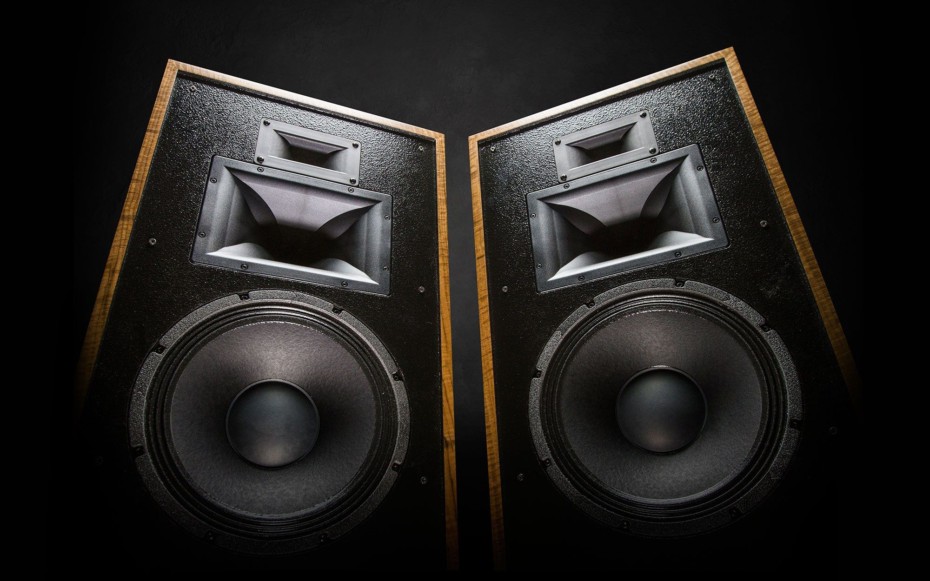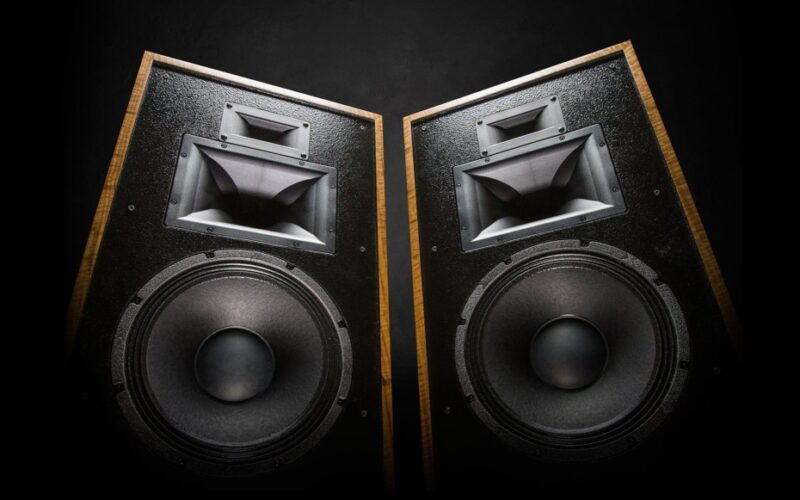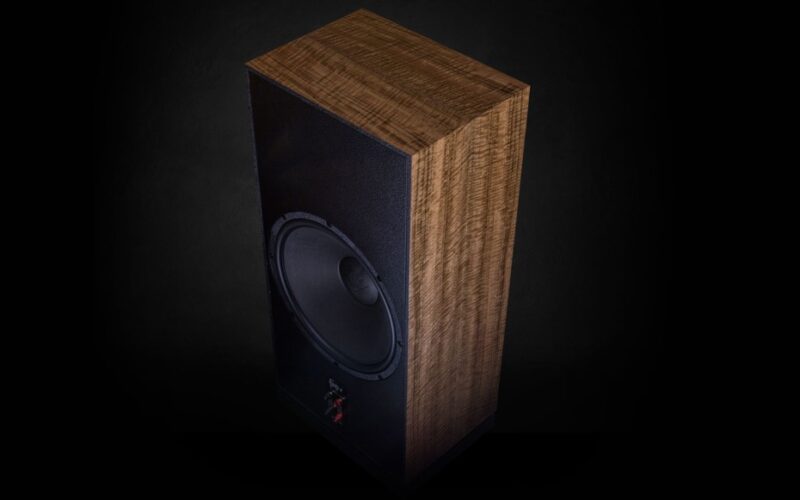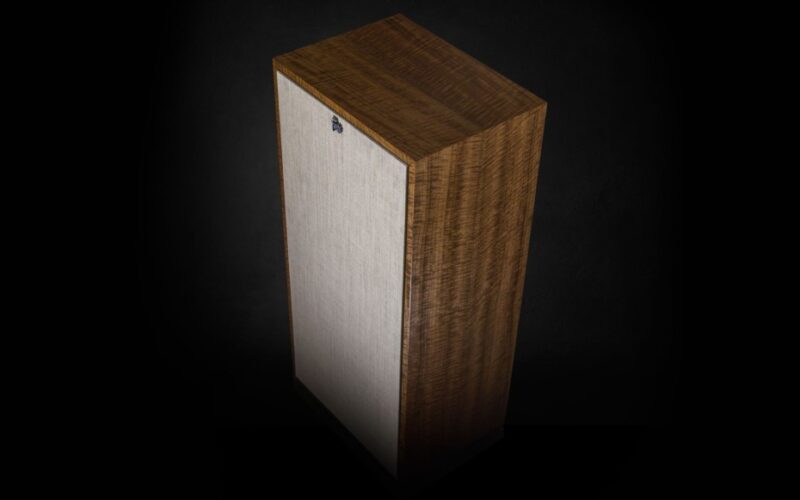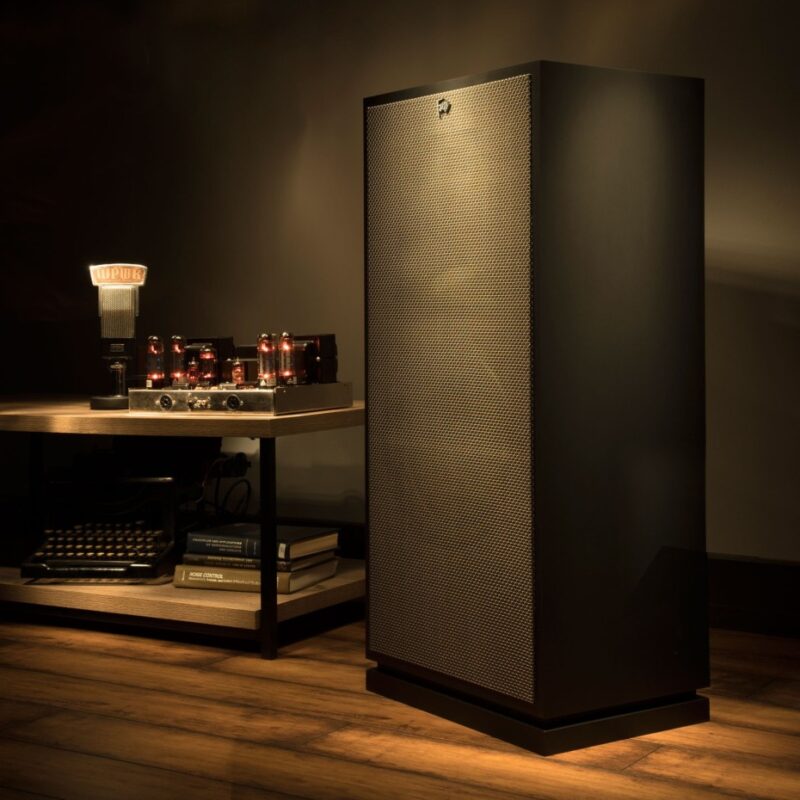You know what you get when you mount an amplifier behind a pair of Klipsch speakers. With a sky-high fun factor and buckets of charm, Klipsch manages time and time again to engage us like few other speaker manufacturers.
This does not mean that a pair of Klipsch speakers is suitable for everyone. In the classic Heritage series, there are speakers with a different appeal, than the usual high-tech high-end speakers we usually write about.
Like these. Klipsch Forte III Special Edition, which looks like something you inherited from an old uncle, but which is technically quite modern. Although the basics are based on Paul Klipsch’s philosophy.
Here it means horn-charged elements in midrange and treble, combined with a large bass element, and a passive bass on the back. All in a nice handmade cabinet with generous interior volume.
A large cabinet, horn charge, a simple crossover and large bass elements are a good combination if you want an easy-to-operate and efficient speaker. Something that dates back to the time Paul Klipsch started with speaker production. Back then, an amplifier was usually only a few watts. Today, amplifier power costs little, and it is readily available.
But that does not mean that the recipe is no longer relevant.
An easy-to-drive speaker is usually easier to control, and it delivers higher sound pressure with less power. This means that a 200 W amplifier can deliver less power to achieve a given sound pressure. It provides greater stability, better control, less distortion and noise – and the remaining effect can be applied to the most dynamic peaks in music.
Add to that that an easy-to-drive speaker often sounds more dynamic, because it does not require weird torque to kick life into something that does not consume much power. Just read the test of the Klipsch RF-7 II, or Audiovector SR3 Avantgarde Arreté, and you will understand what light drive can do.
All of this is well integrated into the Klipsch Forte III SE, which is a Klipsch speaker I think Paul Klipsch would be proud of.
Fancy wireless speakers? Read the test of Klipsch The Sixes
Passive bass
This is, as the name suggests, a special edition of the Forte, which is now in its third edition since it debuted in 1985. The SE edition we tested comes in a handmade cabinet, either in black or walnut, and has just like the regular Forte III, new and improved speaker elements.
The two horns each house their element with a titanium-coated membrane. One is a treble horn, the other a midrange, and below these is a 12-inch bass element with a membrane in fiber composite.
Another advantage of horn-charged elements is that you can have better control over the spread. By directing the sound waves towards the listener, reflections from the walls are avoided. Which can reduce the stereo image.
In Forte III, Klipsch has chosen to keep the raisin in the sausage. They could have chosen a bass reflex port instead, but stuck to the same passive bass element, mounted on the back. The 15-inch element is not connected to the crossover filter in any way, but is made to add extra weight to the bass. For example, it does nothing with the range in frequency, and the Klipsch speakers roll off the bass relatively early. 38 Hz at minus three decibels, is not all the world.
At least not the size of the speakers taken into account.
Easy to live with
You can, if you want, place the speaker much closer to the back wall than you usually do. Give them 10-15 cm clearance to the back wall, and you get a serious bass pressure within the limits of the speakers.
I chose to pull them out of the wall, and angle them slightly inwards. It gave the best balance in my room, and tighter bass reproduction. They should preferably not be angled too obliquely, because the horn treble can then assume a somewhat sharper character, and this will be avoided at all costs.
As mentioned, the speaker is very efficient with a sensitivity of 99 dB, and nice impedance of normal eight ohms. A small Quad VA-One with a modest 15 W power, had no problem driving the speakers to generous sound pressure.
It got even better with the Audio Research VT80 with 75 W power from four KT120 tubes. It was a match that suited the Klipsch speakers like a glove.
It’s been a long time since I had so much fun at work.
A party
The elaborate speakers are no more than 92 cm high, and upholstered with fabric grills and nicely placed, they do not tower in the room either. But you world as they play!
Klipsch says that the speakers can deliver sound pressure up to 116 dB. I have no reason to doubt that. But even more important is how they play.
The qualities of Forte III can be summed up in three words: Dynamic, tough and open.
Gentle piano recordings, such as Benny Andersson’s (yes, he yes) solo recording called Piano for simplicity’s, sound focused and open. The clarity is noticeable, but the piano sounds a bit slim compared to, for example, Sonus faber Olympica III and Dynaudio Contour 20.
The Klipsch speakers also lack the bass foundation that gives the piano depth in the lowest octave, and the two horn-charged elements do not sound as refined as, for example, a fabric tweeter in a pair of Dynaudio Contour, or a tape tweeter from Piega or Audiovector.
This is where the criticism basically stops, because the speakers are some charming cheerleaders the rest of the time. Throw on Sudan Archives (Tidal) and sit back. Feel free to turn up the volume a few notches more than you usually do. The eclectic mix of North Africa, folk music and R&B, interspersed with electronics and a bit of hip hop, fits perfectly on Forte III.
The complex rhythms under vocals and violin, need a speaker that does not mix the cards. The Klipsch speakers certainly do not. They have superb control in the bass, which is of the generous and full-bodied beat, and small drums, cymbals and snare drums are sharply focused in the big sound picture.
For the speakers, a rare live feeling that makes even studio productions such as Jason Isbell’s latest album, sounds like a live concert. Isbell’s vocals are warm and powerful reproduced by the two horns in each speaker, the guitar tones sparkle in the room, and you are struck by how effortlessly and dynamically it all sounds.
The dynamic capabilities of the speakers greatly help to create the sound that draws you into the music, in a completely different way than many more ‘hifi-correct’ speakers can. They do not sound 100 percent neutral, but when they engage so to the degree, it is easy to forgive.
If the hi-fi police were to knock on the door, just put on Katharine McPhee with Sooner or Later, and I’m sure they’ll get carried away too.
Who needs perfection
Klipsch Forte III SE is a party to listen to. Throw on your favorite album and try for yourself. It is almost impossible not to be charmed. It may be that they do not sound completely correct from an absolute desire for neutrality, that kind of thing other manufacturers have to take care of. At Klipsch, it’s more about music being fun, and it does not get much more festive than this in this price range. If you have the space and budget, the Forte III SE is a pair of speakers that are definitely worth considering. Just a little more deep bass, and I had not hesitated to give them six stars.

We think
A pure party from end to end, vivid soundscape with bold bass and light-hearted dynamics. Lacks deep bass, and a little sophistication of being innertier.
4999 €
Specifications
- 99 dB sensitivity
- 38 Hz – 20 kHz ± 3dB
- 38 cm passive bass membrane
- 30 cm bass element
- Midrange horn with 4.45 cm titanium membrane
- Corner tweeter with 2.54 cm titanium membrane
- Dimensions: 91.4 x 41.9 x 33 cm
- Walnut, black
